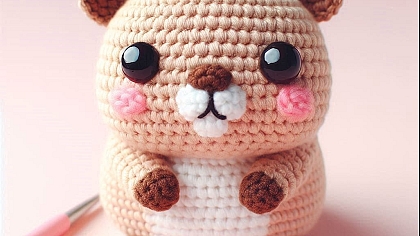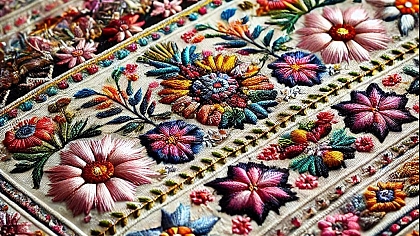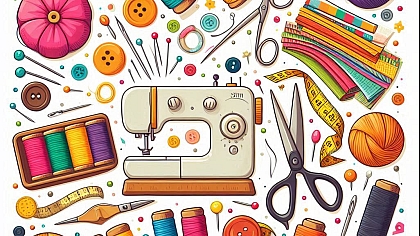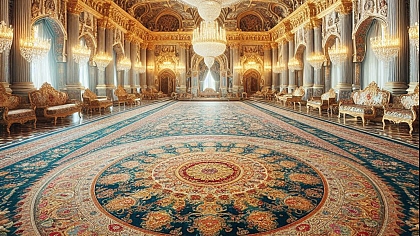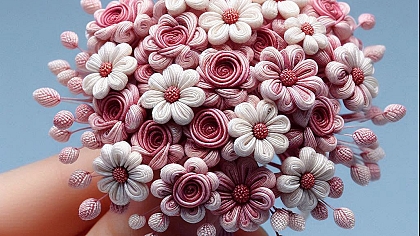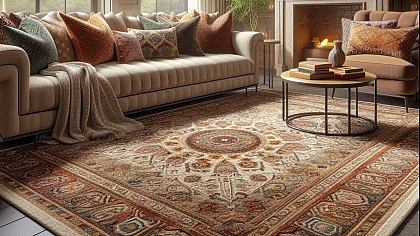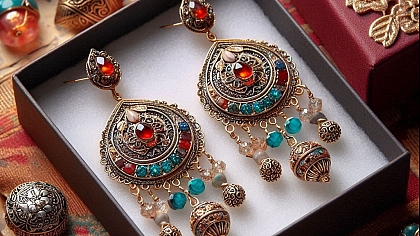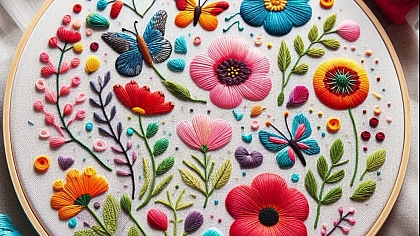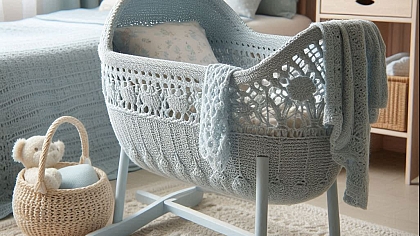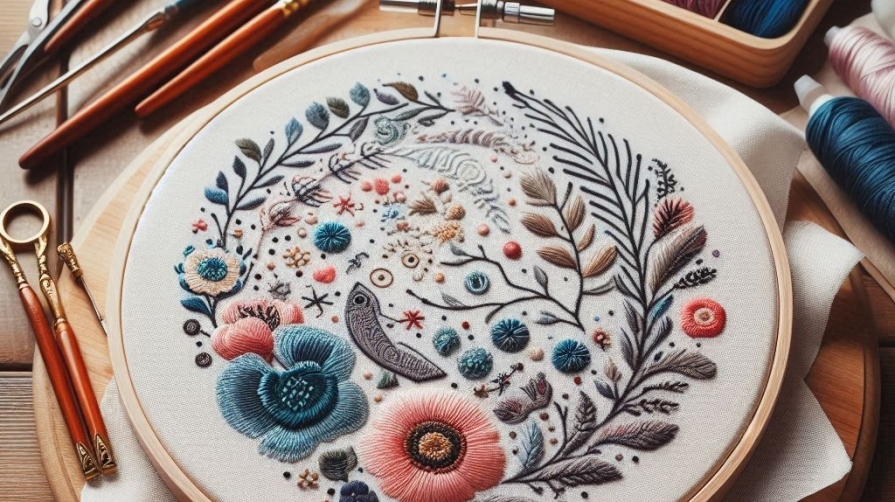
A Beginner's Guide to Embroidery: Essential Techniques and Tips
Embroidery, the art of decorating fabric with needle and thread, has been a beloved craft for centuries. It transforms plain textiles into stunning pieces of art with intricate patterns and vibrant colors. Whether you're looking to embellish clothing, create unique home décor, or simply enjoy a relaxing hobby, embroidery offers endless possibilities. This guide will take you through the essential techniques and tips to help you get started on your embroidery journey.
The History and Allure of Embroidery
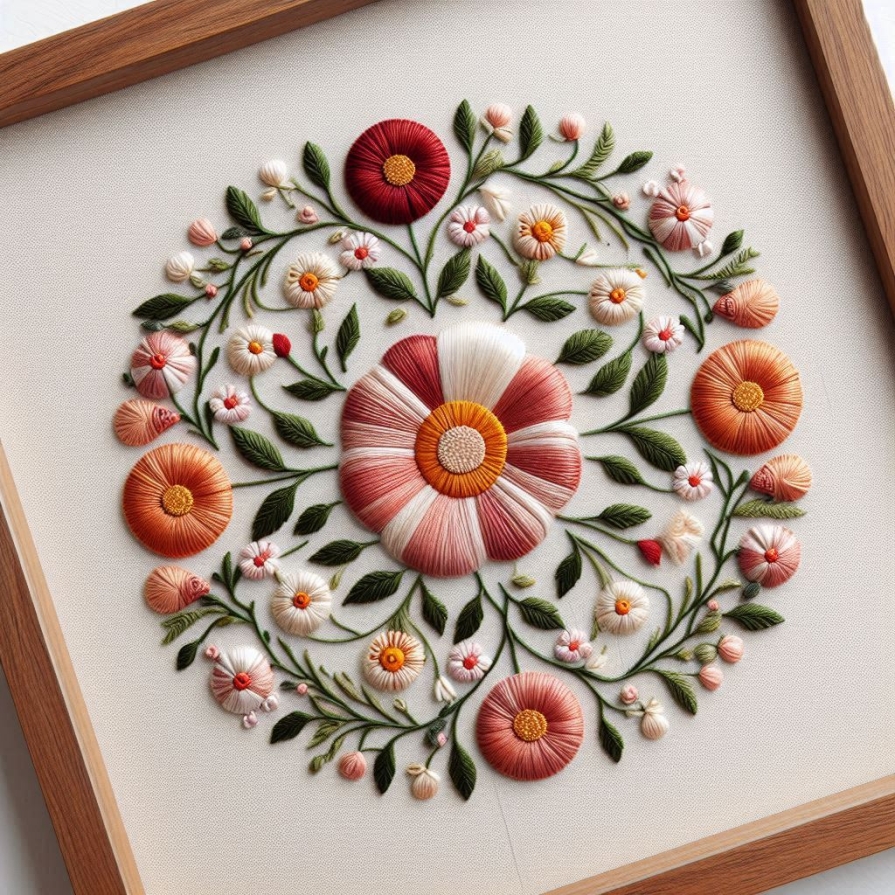
Embroidery's rich history dates back to ancient times, with evidence of this craft found in cultures around the world. From the intricate silk embroideries of China to the elaborate goldwork of medieval Europe, embroidery has always been a means of expressing creativity, status, and cultural identity. Today, it continues to captivate crafters with its blend of tradition and modern innovation.
The allure of embroidery lies in its versatility and the tactile satisfaction it provides. The rhythmic motion of the needle, the feel of different fabrics, and the gradual emergence of a design from a blank canvas are deeply meditative. Each stitch carries the maker's intention and care, making embroidery not just a craft, but a form of artistic expression.
Getting Started: Essential Supplies
To begin your embroidery journey, you'll need a few essential supplies. First and foremost, you'll need an embroidery hoop, which holds your fabric taut and makes stitching easier. Hoops come in various sizes and materials, with wooden and plastic being the most common. A 6 to 8-inch hoop is a good size for beginners.
Next, you'll need embroidery needles, which differ from regular sewing needles. They have a larger eye to accommodate thicker embroidery threads. Tapestry needles, with their blunt tips, are ideal for woven fabrics, while crewel needles, with their sharp tips, are perfect for tightly woven materials.
Embroidery floss is the thread used for stitching. It typically comes in six-strand skeins, allowing you to use as many strands as needed to achieve the desired thickness. Cotton floss is the most popular choice due to its smooth texture and wide range of colors, but you can also experiment with silk, wool, or metallic threads for different effects.
Finally, you'll need fabric. Cotton and linen are excellent choices for beginners due to their tight weave and smooth surface. Choose a fabric that complements your design and thread colors. A water-soluble fabric marker or a heat-erasable pen can be useful for transferring your design onto the fabric.
Transferring Your Design
Before you can start stitching, you'll need to transfer your design onto the fabric. There are several methods to do this, depending on the complexity of your design and the type of fabric you're using. The most common method is to trace the design directly onto the fabric using a lightbox or a window. Place your design on the light source, lay your fabric over it, and trace with a water-soluble or heat-erasable pen.
For more intricate designs, you might use a transfer paper. Place the transfer paper between your design and fabric, then trace over the design with a pencil. The pressure will transfer the design onto the fabric. Alternatively, you can use an iron-on transfer, which involves printing your design onto special transfer paper and ironing it onto the fabric.
Mastering Basic Stitches
Embroidery is built upon a foundation of basic stitches, each with its unique texture and purpose. Familiarizing yourself with these stitches will give you the skills to tackle most embroidery projects.
The running stitch is one of the simplest and most versatile stitches. It consists of a series of small, even stitches that can outline shapes, create textures, or form patterns. The backstitch is another fundamental stitch, known for its strength and neatness. It’s often used for outlining and adding detail to designs.
The satin stitch is perfect for filling in shapes with solid color. It involves making parallel stitches closely together to create a smooth, satin-like finish. The French knot, on the other hand, adds texture and dimension. This stitch involves wrapping the thread around the needle before pulling it through the fabric, creating a small, raised knot.
The chain stitch creates a series of looped stitches that resemble a chain. It’s ideal for outlines and decorative borders. The split stitch, made by splitting the previous stitch with the needle, produces a solid line that’s great for detailed work.
Choosing and Preparing Your Fabric
The choice of fabric can greatly impact the outcome of your embroidery project. Natural fibers like cotton, linen, and wool are popular choices due to their durability and ease of use. Cotton and linen, in particular, provide a smooth surface that makes stitching easier and neater.
Before you start stitching, it's important to prepare your fabric. Begin by washing and ironing it to remove any wrinkles or sizing that might interfere with your stitching. Stretch the fabric tightly in your embroidery hoop, ensuring it’s drum-tight to prevent puckering.
Selecting and Using Embroidery Floss
Embroidery floss is available in a dazzling array of colors and textures, giving you endless creative possibilities. When selecting floss, consider the color scheme of your design and how the colors will interact with each other and the fabric.
To use the floss, cut a length of about 18 inches to prevent tangling. Separate the strands according to your design's needs. For fine details, use one or two strands; for bolder lines or filling in shapes, use more strands. Thread your needle with the desired number of strands and knot the end to secure it.
Stitching Techniques: Tips for Success
Embroidery requires patience and precision, but with practice, you'll develop a steady hand and a keen eye for detail. Here are some tips to help you along the way:
Start with simple projects to build your confidence. Choose designs with basic stitches and gradually progress to more complex patterns.
Take breaks to rest your eyes and hands. Embroidery can be physically demanding, and frequent breaks will help prevent strain and fatigue.
Maintain even tension on your thread to ensure consistent stitches. Pull the thread gently but firmly to avoid puckering or loose stitches.
Practice good posture to avoid discomfort. Sit in a comfortable chair with good back support and adequate lighting.
Troubleshooting Common Issues
As with any craft, you might encounter some challenges while embroidering. Common issues include tangling, puckering, and uneven stitches. Tangling can often be avoided by using shorter lengths of thread and separating the strands before threading the needle.
Puckering occurs when the fabric is too loose in the hoop or when the thread is pulled too tightly. To fix this, ensure your fabric is stretched tightly in the hoop and maintain consistent tension on the thread.
Uneven stitches can result from inconsistent tension or improper technique. Practice your stitches on scrap fabric to develop a steady rhythm and even pressure.
Creative Embroidery Techniques
Once you've mastered the basic stitches, you can explore more advanced techniques to add depth and texture to your work. One such technique is applique, which involves stitching pieces of fabric onto your base fabric to create a layered effect. This is great for adding color and dimension to your designs.
Another technique is bead embroidery, which incorporates beads into your stitching to add sparkle and texture. This can be used to highlight certain areas of your design or create intricate patterns.
Freeform embroidery allows you to experiment with different stitches and techniques without following a specific pattern. This approach encourages creativity and improvisation, resulting in unique, one-of-a-kind pieces.
Embroidery Projects for Beginners
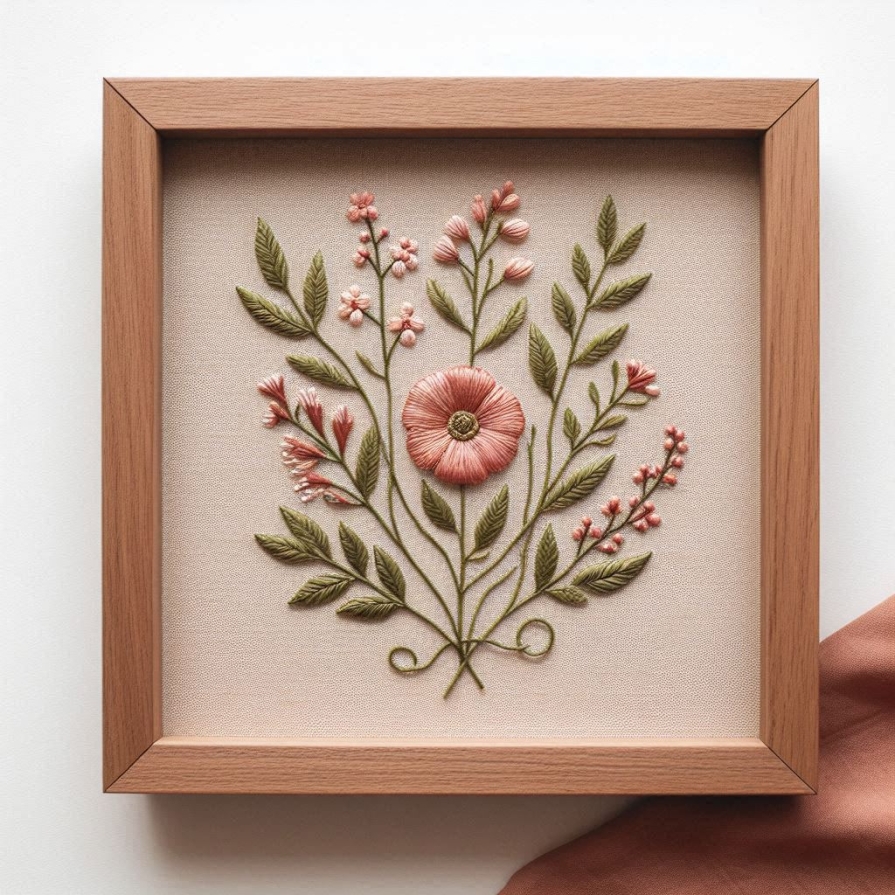
Starting with small, manageable projects can help build your skills and confidence. Embroidered patches are a great beginner project. They can be added to clothing, bags, or accessories and are perfect for practicing basic stitches and experimenting with colors.
Another simple project is an embroidered hoop art. Choose a small design, such as a floral motif or a geometric pattern, and stitch it onto a piece of fabric stretched in an embroidery hoop. This can be displayed as wall art or given as a gift.
Personalized items, such as monogrammed handkerchiefs or embroidered bookmarks, also make excellent beginner projects. They allow you to practice your stitches while creating something functional and unique.
Caring for Your Embroidery
Proper care and maintenance will ensure your embroidered pieces last for years to come. When washing embroidered items, use a gentle detergent and hand wash them in cold water. Avoid wringing or twisting the fabric, as this can distort the stitches.
If you need to iron your embroidery, do so on the reverse side with a pressing cloth to protect the stitches. Store your finished pieces in a cool, dry place away from direct sunlight to prevent fading and deterioration.
Joining the Embroidery Community
Embroidery is not just a solitary hobby; it’s also a way to connect with others who share your passion. Online communities, such as forums, social media groups, and YouTube channels, offer a wealth of resources and support. You can find tutorials, pattern ideas, and advice from experienced embroiderers.
Local embroidery groups and workshops are another great way to meet fellow crafters and learn new techniques. Many fabric and craft stores offer classes for beginners, providing hands-on instruction and a chance to socialize with other embroidery enthusiasts.
Embroidery as a Form of Artistic Expression
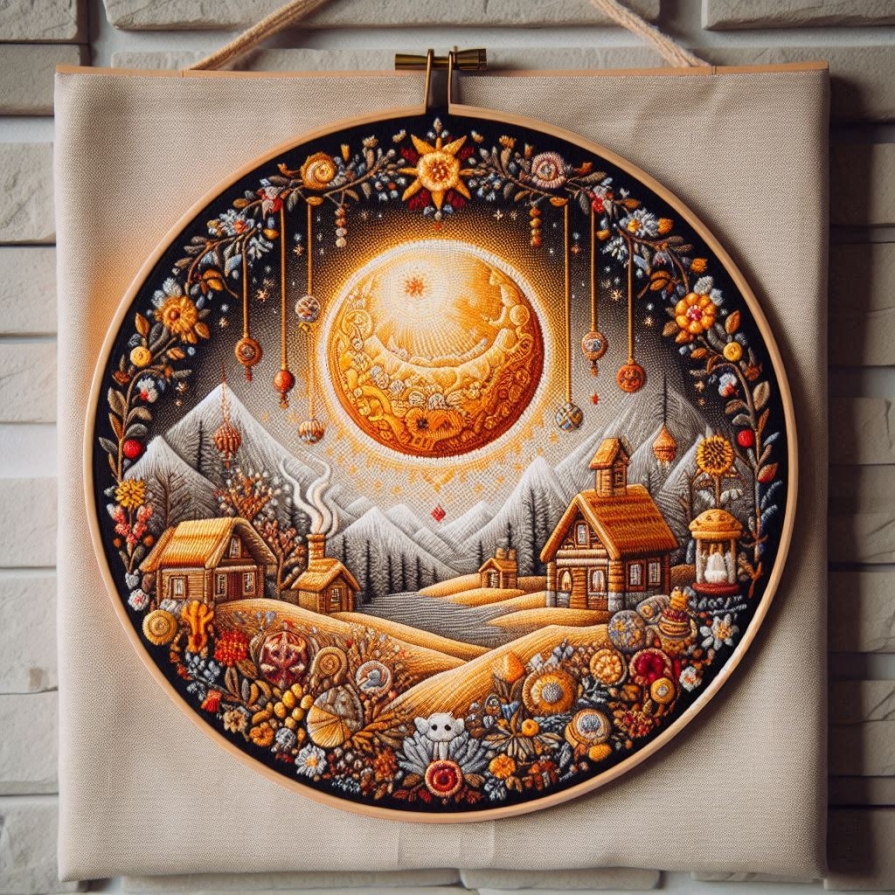
Beyond its practical applications, embroidery is a powerful form of artistic expression. Through your choice of colors, stitches, and designs, you can convey emotions, tell stories, and capture moments. Each piece of embroidery is a reflection of your creativity and individuality.
Don’t be afraid to experiment with unconventional materials and techniques. Mixed media embroidery, which combines stitching with other art forms such as painting or collage, opens up endless possibilities for artistic exploration.
Embracing the Joy of Embroidery
Embroidery is a timeless craft that offers endless opportunities for creativity and self-expression. By mastering the essential techniques and tips outlined in this guide, you'll be well on your way to creating beautiful, intricate pieces of art. Remember, the key to successful embroidery is practice, patience, and a willingness to experiment.
As you embark on your
embroidery journey, take the time to appreciate the process and the satisfaction that comes from creating something with your own hands. Whether you're embellishing a simple handkerchief or crafting an elaborate wall hanging, the joy of embroidery lies in the act of making and the beauty of the finished piece. Happy stitching!

